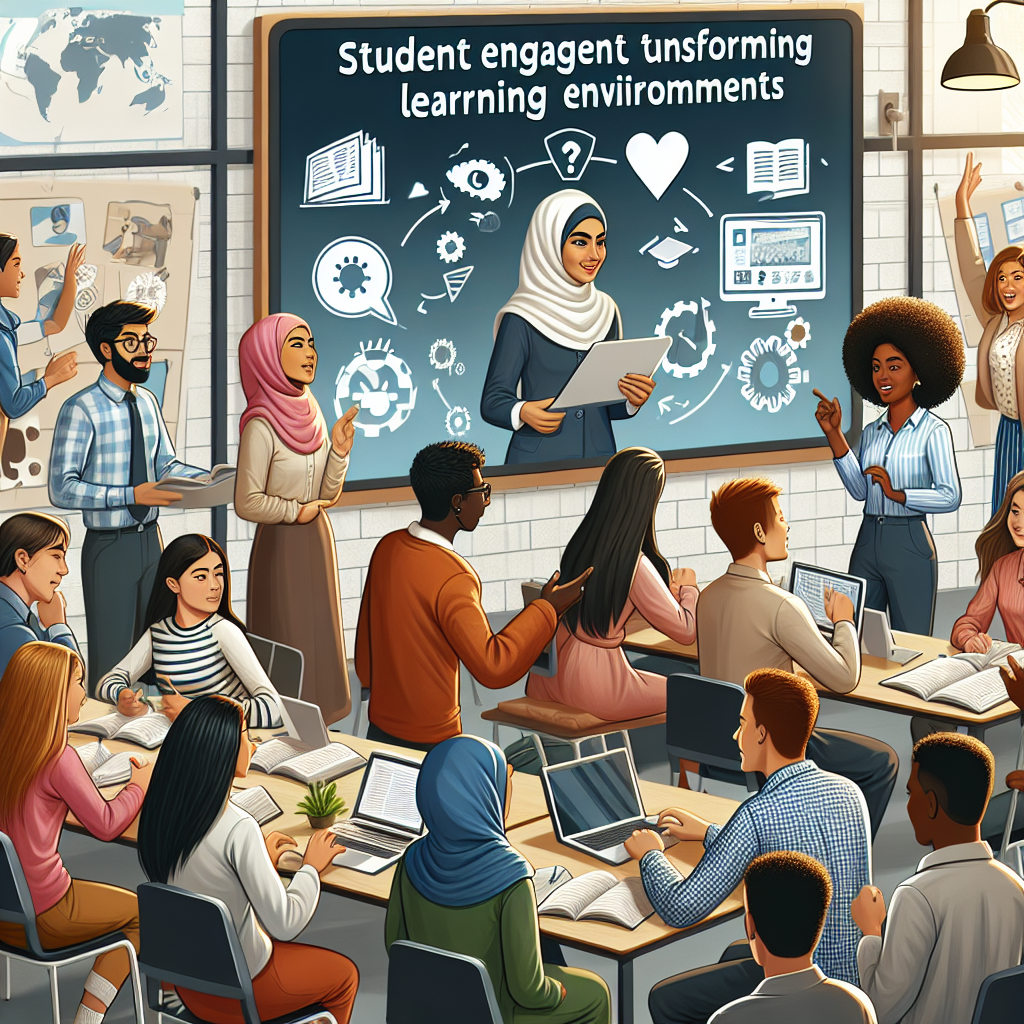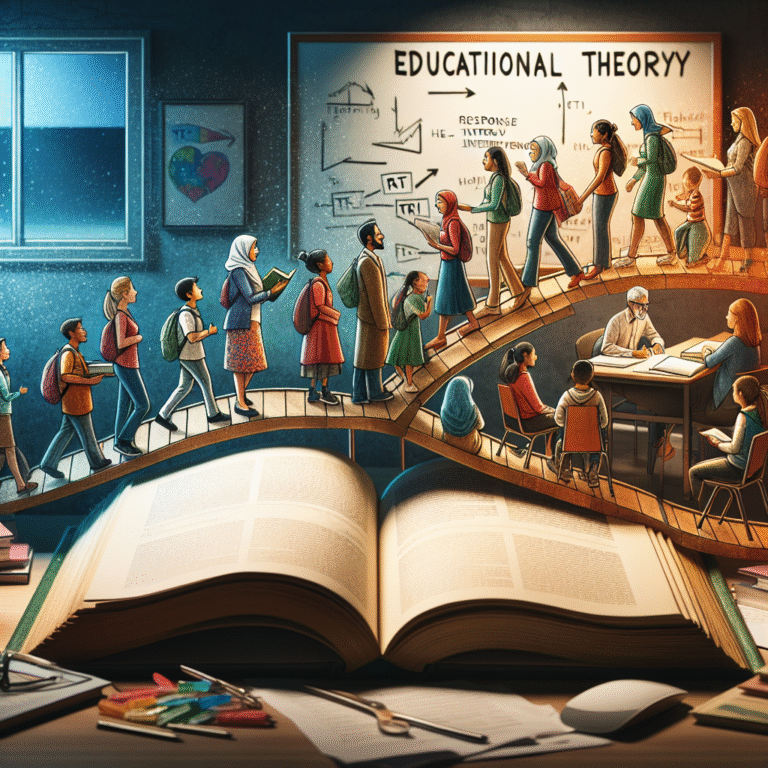
Introduction: The Catalyst for Change
In today’s rapidly evolving educational landscape, student engagement has emerged as a cornerstone of effective learning. The age-old adage, "you learn more when you participate," has never been more relevant. Engaging students in the learning process cultivates not only a deeper understanding of material but fosters critical skills needed for the real world. “The Power of Participation: How Student Engagement Transforms Learning Environments” touches on this vital interplay between active involvement and successful educational outcomes, showcasing its significance across diverse settings.
Imagine a classroom where students don’t just passively listen to lectures but actively engage, question, and collaborate. This dynamic participation turns traditional education into an empowering journey, making learning relevant, enjoyable, and impactful. As we dissect the layers of student engagement, we’ll uncover compelling insights about its transformative power.
Understanding Student Engagement
What is Student Engagement?
At its core, student engagement refers to the level of interest, enthusiasm, and commitment that students show towards their learning. It manifests in various forms:
- Behavioral Engagement: This includes participation in class discussions, completion of assignments, and overall involvement in school activities.
- Emotional Engagement: This dimension involves feelings of belonging and value in the educational experience.
- Cognitive Engagement: Students demonstrate cognitive engagement when they invest mental effort in understanding the material, often leading to higher-order thinking.
The Importance of Engagement in Learning Environments
Student engagement forms the bedrock of effective learning. In environments where engagement flourishes, students tend to exhibit:
- Higher Academic Achievement: Engaged students are more likely to excel academically and develop a love for learning.
- Enhanced Critical Thinking Skills: Active participation encourages students to think critically, analyze information, and formulate their ideas.
- Improved Social Skills: Collaborative projects and discussions foster teamwork and communication abilities.
Theoretical Foundations
The Constructivist Approach
Constructivist theories, championed by educational theorists like Piaget and Vygotsky, emphasize the role of active participation in the learning process. According to their philosophies, learners construct knowledge best through social interaction and hands-on experiences. By actively participating, students create their understanding of concepts, which is far more powerful than rote learning.
Self-Determination Theory (SDT)
SDT posits that three basic psychological needs—autonomy, competence, and relatedness—are essential for fostering engagement. When students feel empowered to make choices in their learning, believe in their abilities, and feel connected to their peers and educators, they are more likely to engage meaningfully.
The Power of Participation: Real-World Applications
Case Study 1: Project-Based Learning in Action
Setting: A middle school in California.
Initiative: The school adopted a project-based learning (PBL) approach.
Outcome: Students worked collaboratively on community-oriented projects. They researched local environmental issues, developed solutions, and presented their findings to local stakeholders.
Relevance: This case exemplifies “The Power of Participation: How Student Engagement Transforms Learning Environments” by illustrating how real-world applications enhance motivation and deepen understanding.
Analysis
The PBL method effectively harnesses the power of student engagement. Students not only demonstrated mastery of content but also developed social responsibility and critical thinking skills.
Case Study 2: Gamification in Higher Education
Setting: A university in New York.
Initiative: A professor incorporated gamification elements into the curriculum.
Outcome: Students participated in-game-based learning modules, earning points and rewards for completing tasks and collaborating with peers.
Relevance: This initiative illustrates how “The Power of Participation: How Student Engagement Transforms Learning Environments” can be enhanced through technology and interactive platforms.
Analysis
Gamification boosted student motivation and encouraged a deeper investment in the learning process, leading to improved academic performance and satisfaction.
Innovative Techniques to Enhance Student Engagement
1. Collaborative Learning
Promoting group activities where students work together fosters not only engagement but powerful learning experiences. Through collaboration, students learn to value diverse perspectives.
2. Interactive Technology
Utilizing apps and online platforms for discussions, quizzes, and project management cultivates a more interactive learning environment. Tools such as Kahoot and Google Classroom can harness digital engagement.
3. Inquiry-Based Learning
Encouraging students to ask questions and seek answers through exploration allows them to take ownership of their learning. Inquiry-based projects challenge their investigative skills and creativity.
4. Flipped Classroom Models
Reversing traditional classroom dynamics, where students learn new content at home and engage in practice during class, promotes active participation and deeper understanding.
Challenges and Solutions
Common Challenges in Fostering Engagement
- Resistance to Change: Some educators may resist moving away from traditional lecturing.
- Diverse Learning Styles: Catering to various learning preferences can be challenging.
- Resource Limitations: Not all schools have access to technology or training.
Strategies to Overcome These Challenges
- Professional Development: Training educators on effective engagement strategies can ease the transition.
- Flexible Pedagogy: Incorporating varied teaching methods appeals to diverse learners.
- Leveraging Community Resources: Partnerships with local businesses and organizations can enhance resource availability.
Conclusion: Empowering the Future Through Engagement
The transformation of learning environments through student engagement is not just a trend; it is a necessity. “The Power of Participation: How Student Engagement Transforms Learning Environments” emphasizes that when students take an active role in their education, they become more invested, motivated, and successful learners.
As educators, administrators, and policymakers, we must prioritize strategies that promote engagement. The future of education lies in empowering students to shape their own learning journeys. Let’s embrace this dynamic approach, nurturing curious minds and fostering lifelong learners.
FAQs
1. What are the main benefits of student engagement?
Student engagement enhances academic performance, boosts social skills, and fosters critical thinking abilities.
2. How can teachers increase engagement in the classroom?
Implementing interactive activities, incorporating student interests, and utilizing technology can significantly boost engagement levels.
3. What role does technology play in student engagement?
Technology facilitates interactive learning experiences and provides tools that help students collaborate and connect effectively.
4. How can parents support their children’s engagement?
Encouraging curiosity, providing a productive learning environment at home, and fostering open communication with teachers can support engagement.
5. Are there specific strategies for different age groups?
Yes, techniques should be tailored; younger students may benefit from gamification, while older students might thrive in collaborative or inquiry-based settings.
By recognizing and harnessing “The Power of Participation: How Student Engagement Transforms Learning Environments,” we can cultivate motivated and capable individuals prepared to excel in their academic and professional lives.


















